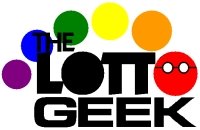Happy New Year. Your 2014 had to have been better than the one MUSL had, which by all accounts completely whiffed on their Monopoly Millionaires' Club game. The lottery industry seemed down right stoked, the idea of mainstreaming the $5 price point to lotto games; this had only been tried once in South Carolina, with dismal results. However, players did not share in the enthusiasm. Sales were so bad that they pulled the plug after 10 drawings; they simply weren't selling enough tickets to pay for the promised prize amounts. There was a massive rolldown in Pennsylvania where, for example, a 2-number match paid out $97.50 and matching just the property won $135.50 (which I managed to do, yay me). I'm not sure how much of the jackpot Pennsylvania recieved, and in turn paid back to players, but no other states did the same thing. I'd be pretty angry if was a player in one of the other states.
Setting the high price aside, the game was pretty meh. The gimmick of the game was twofold; a chance to win one of several million dollar prizes when the jackpot was won, and a webcode to enter for a chance to appear on a game show. Other than that, it was just Powerball-type game: pick 5 from 52 and one of the 28 Monopoly properties. Except, you could only pick the first five numbers; the property was always a quick pick. You see, the game show qualifying game was a collect-and-win type of deal, not unlike the Monopoly contests McDonald's does. If you entered your webcode, the property on your ticket would be placed on the "board". Get all the properties of a certain color (or all the Railroads) and you win entries. Allowing players to pick their own properties would mean that players could just pick either Boardwalk or Park Place on each ticket, and guarantee themselves several entries every time (not to mention putting the lottery on the hook for much more prizes if Boardwalk or Park Place came up). Good reasoning aside, players like to able to pick their own numbers (or properties), and I'm sure requiring quick pick for the property number kept some people away.
The second "problem" was the jackpot. Any excess jackpot money would go towards those extra million dollar prizes. The idea was to have potentially 100 or more individual million dollar prizes; but to pay for that, the jackpot was capped at $25 million, annuity value. People get excited about big jackpots, and little else. To get someone who's still getting used to $2 Powerball to now plunk down $5 for, at most, $25 mil, you can see why the lotteries were facing an uphill battle. Perhaps the hope was that players would, instead, get excited about being one of 100 or more million dollar winners. With sales the way the were, it could have taken at least a year of losses to get to that point, provided no one won the jackpot in the meantime.
The third problem, computerized drawings. People don't like them, and they never will.
The fourth problem, and the biggest one, is the price. People will pay $5 for a lottery ticket; it's the most popular price point for scratch-offs, in fact. In turn, you need to provided added value: better overall odds; a larger top prize; and most importantly, a higher return percentage (which people notice, albeit indirectly). $5 scratch-offs do all of that, but MMC provided no real added value, instead depending on gimmicks like webcodes. The overall odds were roughly the same as a typical pick-5 with a match 2 prize; the top prize was capped at $25 mil; and the payout percentage was the same as Powerball and Mega Millions, 50% of sales, three-fifths of which go to the jackpot.
If lotteries want people to pay more, then they have to pay more. They are thinking about bringing the game back with some tweaks, but one of those needs to be a higher payout percentage, at least 60% of sales. The extra money can go towards the million dollar raffle prizes, it can go towards higher jackpots, maybe an instant win feature; it can go anywhere, really. Just raise the payouts to loosen the game up. Players will notice.




